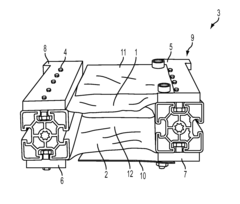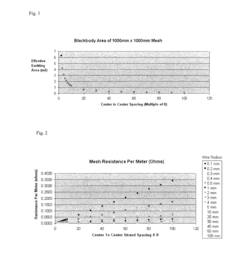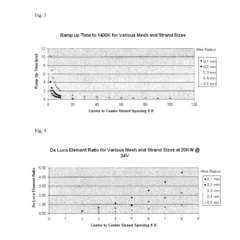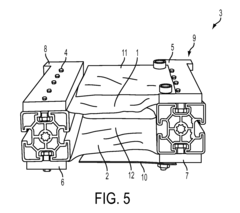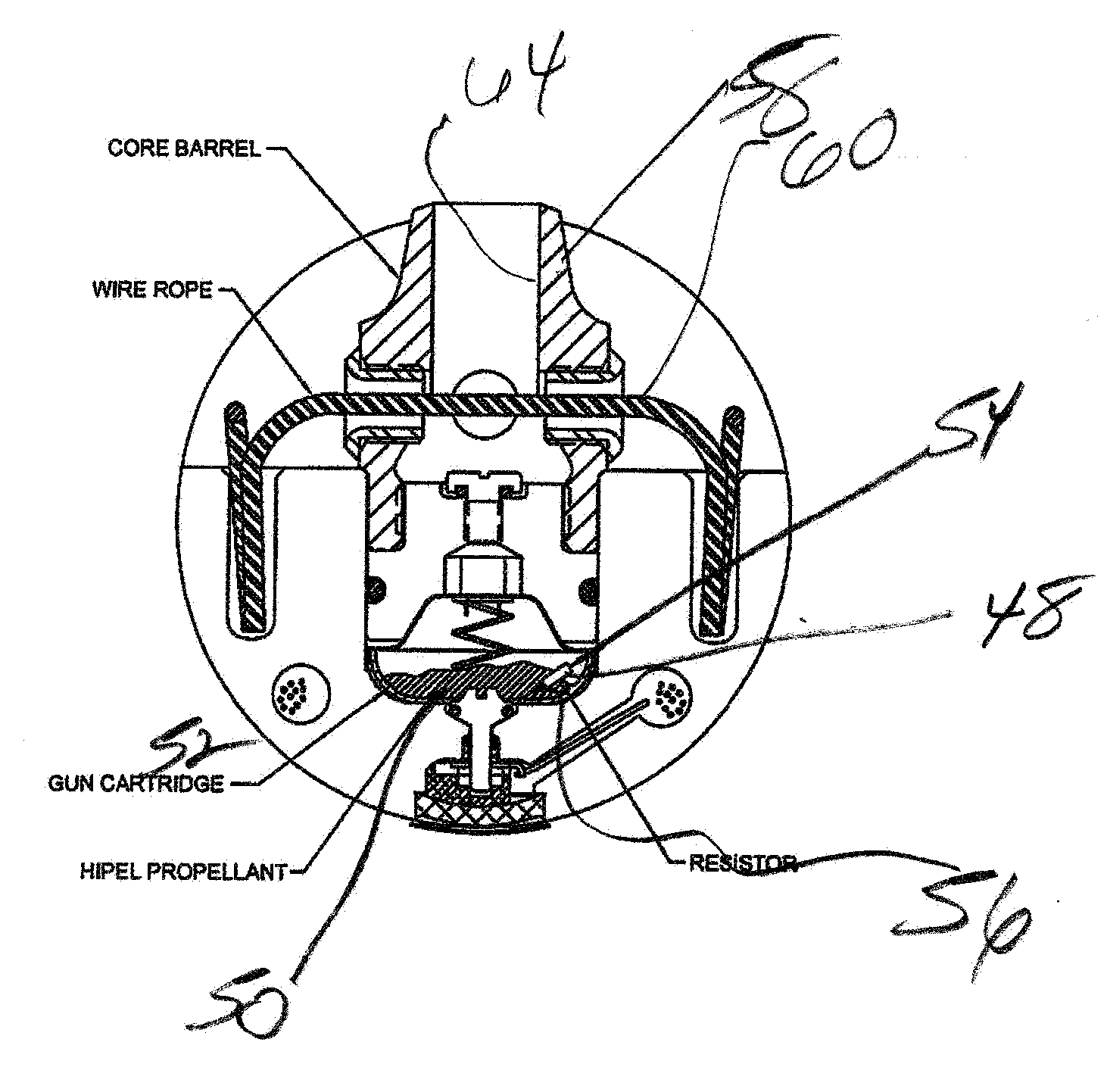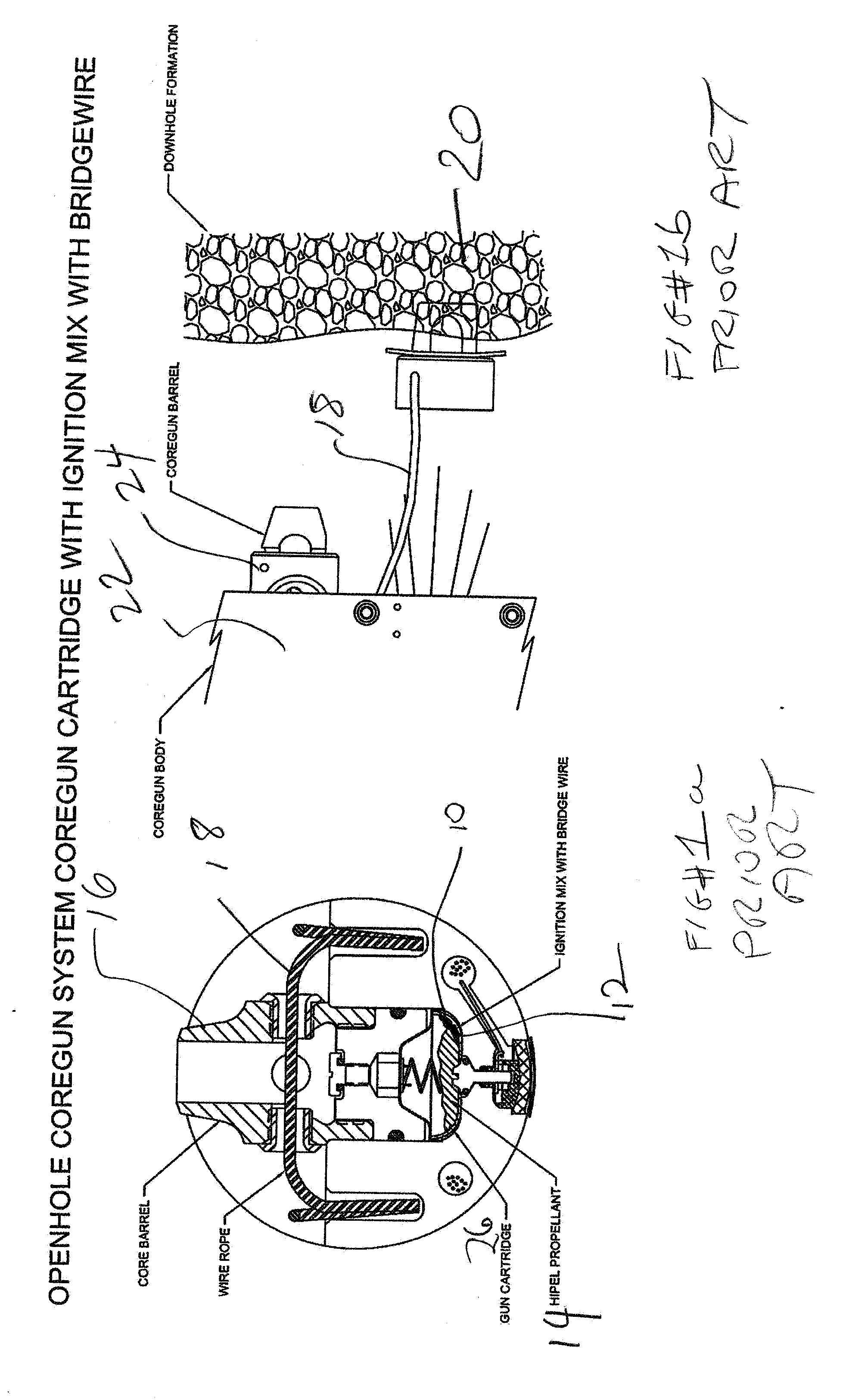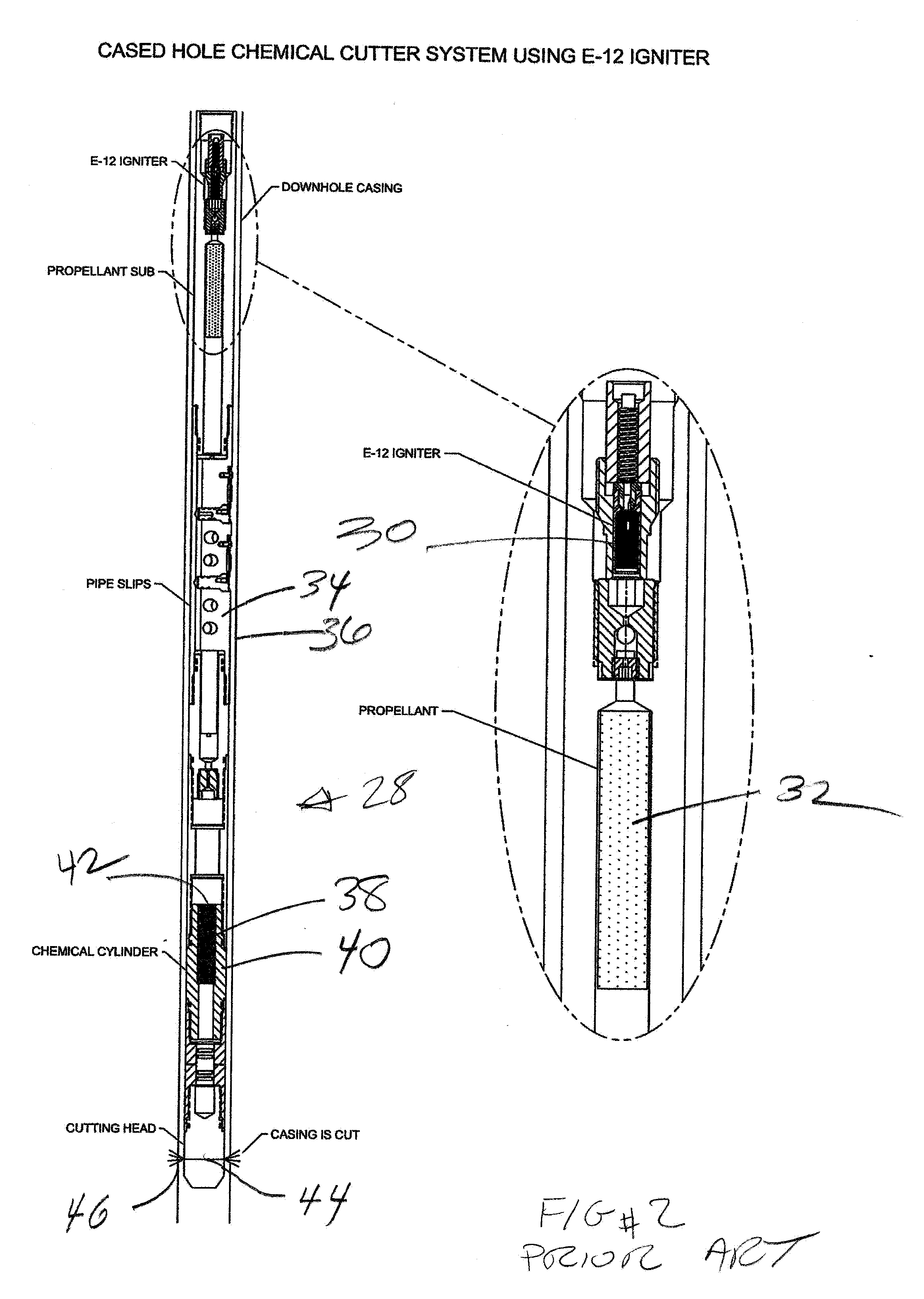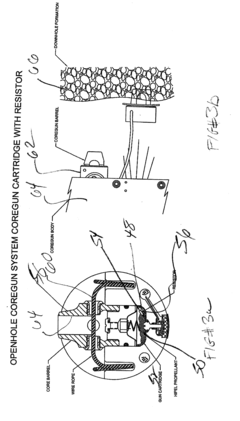Nichrome Wire: Best Practices for Safe Usage
JUL 11, 20258 MIN READ
Generate Your Research Report Instantly with AI Agent
Patsnap Eureka helps you evaluate technical feasibility & market potential.
Nichrome Wire Safety Overview and Objectives
Nichrome wire, an alloy primarily composed of nickel and chromium, has been widely used in various industrial and consumer applications due to its unique properties, particularly its high electrical resistance and heat-generating capabilities. The evolution of nichrome wire technology can be traced back to the early 20th century when it was first developed as a heating element material. Since then, its applications have expanded significantly, encompassing fields such as aerospace, automotive, and consumer electronics.
The primary objective of this technical research report is to comprehensively examine the best practices for the safe usage of nichrome wire. As the demand for efficient heating elements continues to grow across multiple industries, ensuring the safe implementation of nichrome wire becomes increasingly crucial. This report aims to provide a thorough understanding of the safety considerations, potential hazards, and recommended guidelines for handling and utilizing nichrome wire in various applications.
To achieve this objective, we will explore the fundamental properties of nichrome wire, including its composition, electrical characteristics, and thermal behavior. Understanding these aspects is essential for identifying potential safety risks and developing appropriate mitigation strategies. Additionally, we will investigate the current industry standards and regulations governing the use of nichrome wire, as well as any recent advancements in safety protocols.
The scope of this report extends to various applications of nichrome wire, ranging from industrial heating systems to household appliances. By examining diverse use cases, we aim to identify common safety challenges and industry-specific considerations. This comprehensive approach will enable us to develop a set of best practices that can be applied across different sectors, ensuring the safe and efficient utilization of nichrome wire.
Furthermore, this report will address emerging trends in nichrome wire technology, such as the development of advanced alloy compositions and innovative manufacturing techniques. These advancements may have significant implications for safety practices and will be evaluated in the context of their potential impact on existing safety protocols.
By conducting this in-depth analysis, we intend to provide valuable insights and recommendations for manufacturers, engineers, and end-users involved in the application of nichrome wire. The ultimate goal is to enhance safety standards, minimize risks, and promote the responsible use of this versatile material across various industries.
The primary objective of this technical research report is to comprehensively examine the best practices for the safe usage of nichrome wire. As the demand for efficient heating elements continues to grow across multiple industries, ensuring the safe implementation of nichrome wire becomes increasingly crucial. This report aims to provide a thorough understanding of the safety considerations, potential hazards, and recommended guidelines for handling and utilizing nichrome wire in various applications.
To achieve this objective, we will explore the fundamental properties of nichrome wire, including its composition, electrical characteristics, and thermal behavior. Understanding these aspects is essential for identifying potential safety risks and developing appropriate mitigation strategies. Additionally, we will investigate the current industry standards and regulations governing the use of nichrome wire, as well as any recent advancements in safety protocols.
The scope of this report extends to various applications of nichrome wire, ranging from industrial heating systems to household appliances. By examining diverse use cases, we aim to identify common safety challenges and industry-specific considerations. This comprehensive approach will enable us to develop a set of best practices that can be applied across different sectors, ensuring the safe and efficient utilization of nichrome wire.
Furthermore, this report will address emerging trends in nichrome wire technology, such as the development of advanced alloy compositions and innovative manufacturing techniques. These advancements may have significant implications for safety practices and will be evaluated in the context of their potential impact on existing safety protocols.
By conducting this in-depth analysis, we intend to provide valuable insights and recommendations for manufacturers, engineers, and end-users involved in the application of nichrome wire. The ultimate goal is to enhance safety standards, minimize risks, and promote the responsible use of this versatile material across various industries.
Market Demand for Nichrome Wire Applications
The market demand for Nichrome wire applications has been steadily growing across various industries due to its unique properties and versatile uses. In the heating element sector, Nichrome wire remains a popular choice for electric heaters, toasters, hair dryers, and other household appliances. The increasing adoption of smart home technologies and energy-efficient appliances has further boosted the demand for high-quality Nichrome wire in this segment.
In the aerospace and automotive industries, Nichrome wire finds applications in sensors, resistors, and heating systems. The growing emphasis on lightweight materials and fuel efficiency in these sectors has led to increased use of Nichrome wire in various components. Additionally, the expansion of electric vehicle production has created new opportunities for Nichrome wire in battery heating systems and thermal management solutions.
The electronics industry continues to be a significant consumer of Nichrome wire, particularly in the production of resistors and other electronic components. As the demand for miniaturized and high-performance electronic devices grows, so does the need for precision-engineered Nichrome wire products.
In the industrial sector, Nichrome wire is widely used in furnaces, kilns, and other high-temperature applications. The ongoing industrialization in developing countries and the modernization of manufacturing facilities in developed nations contribute to the sustained demand for Nichrome wire in this segment.
The medical industry has also emerged as a promising market for Nichrome wire applications. Its use in surgical instruments, sterilization equipment, and medical devices has increased due to its excellent heat resistance and biocompatibility properties.
The global Nichrome wire market is expected to experience steady growth in the coming years, driven by technological advancements and the expansion of end-use industries. However, the market faces challenges such as fluctuations in raw material prices and the emergence of alternative materials in some applications.
To address these challenges and capitalize on growth opportunities, manufacturers are focusing on developing innovative Nichrome wire products with enhanced properties and exploring new application areas. The increasing emphasis on sustainable and energy-efficient solutions across industries is likely to create additional demand for Nichrome wire in the future, particularly in renewable energy and green technology applications.
In the aerospace and automotive industries, Nichrome wire finds applications in sensors, resistors, and heating systems. The growing emphasis on lightweight materials and fuel efficiency in these sectors has led to increased use of Nichrome wire in various components. Additionally, the expansion of electric vehicle production has created new opportunities for Nichrome wire in battery heating systems and thermal management solutions.
The electronics industry continues to be a significant consumer of Nichrome wire, particularly in the production of resistors and other electronic components. As the demand for miniaturized and high-performance electronic devices grows, so does the need for precision-engineered Nichrome wire products.
In the industrial sector, Nichrome wire is widely used in furnaces, kilns, and other high-temperature applications. The ongoing industrialization in developing countries and the modernization of manufacturing facilities in developed nations contribute to the sustained demand for Nichrome wire in this segment.
The medical industry has also emerged as a promising market for Nichrome wire applications. Its use in surgical instruments, sterilization equipment, and medical devices has increased due to its excellent heat resistance and biocompatibility properties.
The global Nichrome wire market is expected to experience steady growth in the coming years, driven by technological advancements and the expansion of end-use industries. However, the market faces challenges such as fluctuations in raw material prices and the emergence of alternative materials in some applications.
To address these challenges and capitalize on growth opportunities, manufacturers are focusing on developing innovative Nichrome wire products with enhanced properties and exploring new application areas. The increasing emphasis on sustainable and energy-efficient solutions across industries is likely to create additional demand for Nichrome wire in the future, particularly in renewable energy and green technology applications.
Current Challenges in Nichrome Wire Safety
Despite the widespread use of nichrome wire in various industries, several challenges persist in ensuring its safe usage. One of the primary concerns is the risk of overheating and fire hazards. Nichrome wire's high resistance and ability to reach extremely high temperatures quickly make it susceptible to causing fires if not properly managed or monitored. This risk is particularly pronounced in applications where the wire is used in close proximity to flammable materials or in poorly ventilated environments.
Another significant challenge is the potential for electrical shock. As nichrome wire is often used in heating elements that require high voltage, there is an inherent risk of electric shock if the wire is exposed or if insulation fails. This risk is exacerbated in environments with high humidity or where the wire may come into contact with conductive materials.
The degradation of nichrome wire over time presents another safety concern. With repeated heating and cooling cycles, the wire can become brittle and prone to breaking. This not only reduces the efficiency of the heating element but can also create sharp edges or loose fragments that pose physical hazards to users or nearby equipment.
Controlling the temperature of nichrome wire precisely can be challenging, especially in applications that require fine temperature control. Fluctuations in power supply or environmental conditions can lead to uneven heating, hotspots, or sudden temperature spikes, which can compromise both safety and performance.
The release of potentially harmful fumes is another safety issue associated with nichrome wire usage. When heated to very high temperatures, especially if contaminated or in the presence of certain materials, nichrome wire can emit toxic fumes. This is particularly concerning in enclosed spaces or applications where the wire is in close proximity to food or sensitive materials.
Ensuring proper insulation and containment of nichrome wire elements presents ongoing challenges. The high operating temperatures of the wire can degrade traditional insulating materials over time, requiring frequent inspections and replacements to maintain safety standards.
Lastly, the lack of standardized safety protocols and guidelines specific to nichrome wire usage across different industries contributes to inconsistent safety practices. This variability in safety measures can lead to increased risks, especially in applications where the wire is used in novel or unconventional ways.
Another significant challenge is the potential for electrical shock. As nichrome wire is often used in heating elements that require high voltage, there is an inherent risk of electric shock if the wire is exposed or if insulation fails. This risk is exacerbated in environments with high humidity or where the wire may come into contact with conductive materials.
The degradation of nichrome wire over time presents another safety concern. With repeated heating and cooling cycles, the wire can become brittle and prone to breaking. This not only reduces the efficiency of the heating element but can also create sharp edges or loose fragments that pose physical hazards to users or nearby equipment.
Controlling the temperature of nichrome wire precisely can be challenging, especially in applications that require fine temperature control. Fluctuations in power supply or environmental conditions can lead to uneven heating, hotspots, or sudden temperature spikes, which can compromise both safety and performance.
The release of potentially harmful fumes is another safety issue associated with nichrome wire usage. When heated to very high temperatures, especially if contaminated or in the presence of certain materials, nichrome wire can emit toxic fumes. This is particularly concerning in enclosed spaces or applications where the wire is in close proximity to food or sensitive materials.
Ensuring proper insulation and containment of nichrome wire elements presents ongoing challenges. The high operating temperatures of the wire can degrade traditional insulating materials over time, requiring frequent inspections and replacements to maintain safety standards.
Lastly, the lack of standardized safety protocols and guidelines specific to nichrome wire usage across different industries contributes to inconsistent safety practices. This variability in safety measures can lead to increased risks, especially in applications where the wire is used in novel or unconventional ways.
Existing Safety Protocols and Guidelines
01 Insulation and protective coatings
To enhance safety, nichrome wires can be insulated or coated with protective materials. This helps prevent direct contact with the wire, reducing the risk of electric shock and burns. Insulation materials may include ceramic, mica, or high-temperature resistant polymers.- Insulation and protective coatings: To enhance safety, nichrome wires can be insulated or coated with protective materials. This helps prevent direct contact with the wire, reducing the risk of electric shock and burns. Insulation materials may include ceramics, polymers, or other heat-resistant compounds that maintain their integrity at high temperatures.
- Temperature control and monitoring: Implementing temperature control and monitoring systems can improve the safety of nichrome wire applications. These systems can include thermocouples, temperature sensors, or thermal imaging devices to detect overheating and prevent potential hazards. Automatic shut-off mechanisms can be incorporated to cut power when temperatures exceed safe limits.
- Structural design for heat dissipation: Proper structural design of devices using nichrome wire can enhance safety by improving heat dissipation. This may involve the use of heat sinks, ventilation systems, or specific wire configurations that allow for efficient cooling. Adequate spacing between wire coils and surrounding materials can also prevent overheating and reduce fire risks.
- Material selection and composition: The safety of nichrome wire applications can be improved through careful material selection and composition. This includes using high-quality nichrome alloys with optimal ratios of nickel and chromium, as well as incorporating other elements to enhance specific properties such as corrosion resistance or tensile strength. The choice of surrounding materials should also consider their compatibility with nichrome at high temperatures.
- Safety standards and testing procedures: Implementing rigorous safety standards and testing procedures is crucial for ensuring the safe use of nichrome wire. This includes conducting regular inspections, stress tests, and thermal cycling to assess the wire's performance and durability. Compliance with industry-specific safety regulations and the use of certified components can significantly reduce risks associated with nichrome wire applications.
02 Temperature control and monitoring
Implementing temperature control and monitoring systems for nichrome wire applications can improve safety. This may involve using thermocouples, temperature sensors, or thermal fuses to prevent overheating and potential fire hazards.Expand Specific Solutions03 Proper wire gauge selection
Selecting the appropriate wire gauge for the intended application is crucial for safety. This involves considering factors such as current capacity, resistance, and operating temperature to prevent overheating and wire failure.Expand Specific Solutions04 Ventilation and heat dissipation
Ensuring proper ventilation and heat dissipation in nichrome wire applications can prevent overheating and reduce fire risks. This may include designing products with adequate airflow or incorporating heat sinks to dissipate excess heat.Expand Specific Solutions05 Electrical safety measures
Implementing electrical safety measures such as proper grounding, circuit breakers, and fuses can protect against electrical hazards associated with nichrome wire use. These measures help prevent electric shock and reduce the risk of electrical fires.Expand Specific Solutions
Key Manufacturers and Suppliers Analysis
The competitive landscape for safe usage of Nichrome Wire is characterized by a mature market with established players and ongoing technological advancements. The industry is in a growth phase, driven by increasing demand in electronics, automotive, and industrial applications. Key players like Heraeus Precious Metals, Kyocera Corp., and Kaneka Corp. are investing in R&D to improve safety features and performance. The market size is substantial, with global reach and diverse applications. Technological maturity is high, but companies continue to innovate in areas such as insulation, temperature control, and durability to enhance safety and efficiency.
Heraeus Precious Metals GmbH & Co. KG (New)
Technical Solution: Heraeus has developed advanced nichrome wire manufacturing techniques that prioritize safety. Their process includes precise control of alloy composition, typically 80% nickel and 20% chromium, to ensure optimal resistance and temperature stability[1]. They employ a proprietary annealing process that reduces internal stresses, enhancing the wire's durability and reducing the risk of breakage during use. Heraeus also applies a specialized surface treatment that improves corrosion resistance and reduces the release of potentially harmful metal particles when the wire is heated[2]. For applications requiring extra safety, they offer a ceramic-coated nichrome wire variant that provides additional electrical insulation and thermal protection.
Strengths: High-quality manufacturing process, advanced surface treatments, and specialized coatings enhance safety. Weaknesses: Potentially higher cost due to advanced manufacturing techniques, which may limit accessibility for some applications.
Kyocera Corp.
Technical Solution: Kyocera has developed a comprehensive approach to safe nichrome wire usage, focusing on both the wire itself and its integration into various systems. Their nichrome wire features a uniform microstructure achieved through a controlled cooling process during manufacturing, which enhances its mechanical strength and reduces the risk of sudden failure[7]. Kyocera has also developed a proprietary ceramic coating technology that can be applied to their nichrome wires, providing excellent electrical insulation and thermal protection. This coating significantly reduces the risk of electrical shorts and improves the overall safety of the wire in high-temperature applications. Additionally, Kyocera offers integrated nichrome wire heating elements with built-in temperature sensors and thermal fuses, providing a complete safety solution for various heating applications[8].
Strengths: Comprehensive safety approach including wire manufacturing, coating technology, and integrated safety features. Weaknesses: The integrated solutions may be more complex and expensive than standard nichrome wire, potentially limiting their use in simpler applications.
Innovations in Nichrome Wire Safety Features
Wire mesh thermal radiative element and use in a radiative oven
PatentInactiveUS20150184867A1
Innovation
- A resistive mesh element with a calibrated De Luca Element Ratio, using nichrome wire with a specific strand diameter and spacing, operates at 24V to achieve efficient heat distribution and rapid temperature rise, allowing for quick cooking times while being cost-effective and easy to assemble.
Resistor-based Ignition System for a Core Gun
PatentInactiveUS20130228066A1
Innovation
- Replacing the nichrome wire coated with TK1 ignition mix with a precision resistor under 50 ohms that is welded to the circuit, eliminating the need for the hazardous ignition mix and improving reliability by ensuring consistent and safe assembly.
Regulatory Framework for Nichrome Wire
The regulatory framework for nichrome wire usage encompasses a complex set of standards and guidelines aimed at ensuring safety and compliance across various industries. At the federal level in the United States, the Occupational Safety and Health Administration (OSHA) plays a crucial role in establishing workplace safety regulations that directly impact the use of nichrome wire. OSHA's standards address issues such as electrical safety, heat exposure, and proper handling of materials, all of which are relevant to nichrome wire applications.
In addition to OSHA, the National Electrical Code (NEC), published by the National Fire Protection Association (NFPA), provides comprehensive guidelines for electrical wiring and equipment. The NEC includes specific provisions for high-temperature applications, which are particularly relevant to nichrome wire due to its heat-generating properties. These guidelines cover aspects such as insulation requirements, ampacity ratings, and installation methods.
On an international scale, the International Electrotechnical Commission (IEC) sets global standards for electrical, electronic, and related technologies. The IEC's standards for nichrome wire and similar resistance materials are widely adopted and referenced in many countries, ensuring a level of consistency in safety practices across borders.
Industry-specific regulations also play a significant role in shaping the regulatory landscape for nichrome wire. For instance, in the aerospace industry, the Federal Aviation Administration (FAA) imposes stringent requirements on materials used in aircraft construction and maintenance, including nichrome wire applications. Similarly, the Food and Drug Administration (FDA) regulates the use of nichrome wire in food processing equipment and medical devices, focusing on factors such as material purity and potential contamination risks.
Environmental regulations, such as those enforced by the Environmental Protection Agency (EPA), impact the production and disposal of nichrome wire. These regulations address issues like emissions from manufacturing processes and the proper handling of waste materials containing nichrome.
At the state and local levels, additional regulations may apply, often building upon federal standards to address specific regional concerns or industry concentrations. For example, states with a significant presence in electronics manufacturing may have more detailed guidelines for the use of nichrome wire in circuit board production.
Compliance with these multifaceted regulations requires ongoing vigilance and adaptation from manufacturers, distributors, and end-users of nichrome wire. Regular updates to standards and the introduction of new technologies necessitate a proactive approach to regulatory compliance, ensuring that safety practices evolve in tandem with industry advancements.
In addition to OSHA, the National Electrical Code (NEC), published by the National Fire Protection Association (NFPA), provides comprehensive guidelines for electrical wiring and equipment. The NEC includes specific provisions for high-temperature applications, which are particularly relevant to nichrome wire due to its heat-generating properties. These guidelines cover aspects such as insulation requirements, ampacity ratings, and installation methods.
On an international scale, the International Electrotechnical Commission (IEC) sets global standards for electrical, electronic, and related technologies. The IEC's standards for nichrome wire and similar resistance materials are widely adopted and referenced in many countries, ensuring a level of consistency in safety practices across borders.
Industry-specific regulations also play a significant role in shaping the regulatory landscape for nichrome wire. For instance, in the aerospace industry, the Federal Aviation Administration (FAA) imposes stringent requirements on materials used in aircraft construction and maintenance, including nichrome wire applications. Similarly, the Food and Drug Administration (FDA) regulates the use of nichrome wire in food processing equipment and medical devices, focusing on factors such as material purity and potential contamination risks.
Environmental regulations, such as those enforced by the Environmental Protection Agency (EPA), impact the production and disposal of nichrome wire. These regulations address issues like emissions from manufacturing processes and the proper handling of waste materials containing nichrome.
At the state and local levels, additional regulations may apply, often building upon federal standards to address specific regional concerns or industry concentrations. For example, states with a significant presence in electronics manufacturing may have more detailed guidelines for the use of nichrome wire in circuit board production.
Compliance with these multifaceted regulations requires ongoing vigilance and adaptation from manufacturers, distributors, and end-users of nichrome wire. Regular updates to standards and the introduction of new technologies necessitate a proactive approach to regulatory compliance, ensuring that safety practices evolve in tandem with industry advancements.
Environmental Impact of Nichrome Wire
The environmental impact of nichrome wire is a crucial consideration in its production, use, and disposal. Nichrome, an alloy primarily composed of nickel and chromium, has both positive and negative effects on the environment throughout its lifecycle.
During the manufacturing process of nichrome wire, the extraction and processing of nickel and chromium can lead to significant environmental concerns. Mining operations for these metals often result in habitat destruction, soil erosion, and water pollution. The refining process requires substantial energy input, contributing to greenhouse gas emissions and climate change. Additionally, the production of nichrome wire may release harmful particulates and chemical byproducts into the air and water, potentially affecting local ecosystems and human health.
However, the use of nichrome wire in various applications can have some positive environmental implications. Its high resistance to corrosion and oxidation means that products containing nichrome wire often have longer lifespans, reducing the need for frequent replacements and thereby minimizing waste generation. In heating applications, nichrome wire's efficiency in converting electrical energy to heat can lead to reduced energy consumption compared to alternative materials, potentially lowering overall carbon emissions.
The disposal of nichrome wire at the end of its life cycle presents another set of environmental challenges. While the alloy itself is not considered toxic, improper disposal can lead to the release of nickel and chromium into the environment. These metals can accumulate in soil and water systems, potentially harming plant and animal life. Recycling nichrome wire is possible and can significantly reduce its environmental footprint by decreasing the demand for new raw materials and the associated mining and processing impacts.
To mitigate the environmental impact of nichrome wire, several strategies can be employed. Implementing more sustainable mining practices and cleaner production processes can reduce the initial environmental burden. Designing products for longevity and easy disassembly can extend the wire's useful life and facilitate recycling. Establishing effective recycling programs and educating consumers about proper disposal methods can help minimize the release of metals into the environment.
In conclusion, while nichrome wire does have environmental impacts, particularly in its production and disposal phases, its durability and efficiency in use can offset some of these concerns. Balancing the environmental costs with the benefits of its applications is crucial for sustainable use of this material.
During the manufacturing process of nichrome wire, the extraction and processing of nickel and chromium can lead to significant environmental concerns. Mining operations for these metals often result in habitat destruction, soil erosion, and water pollution. The refining process requires substantial energy input, contributing to greenhouse gas emissions and climate change. Additionally, the production of nichrome wire may release harmful particulates and chemical byproducts into the air and water, potentially affecting local ecosystems and human health.
However, the use of nichrome wire in various applications can have some positive environmental implications. Its high resistance to corrosion and oxidation means that products containing nichrome wire often have longer lifespans, reducing the need for frequent replacements and thereby minimizing waste generation. In heating applications, nichrome wire's efficiency in converting electrical energy to heat can lead to reduced energy consumption compared to alternative materials, potentially lowering overall carbon emissions.
The disposal of nichrome wire at the end of its life cycle presents another set of environmental challenges. While the alloy itself is not considered toxic, improper disposal can lead to the release of nickel and chromium into the environment. These metals can accumulate in soil and water systems, potentially harming plant and animal life. Recycling nichrome wire is possible and can significantly reduce its environmental footprint by decreasing the demand for new raw materials and the associated mining and processing impacts.
To mitigate the environmental impact of nichrome wire, several strategies can be employed. Implementing more sustainable mining practices and cleaner production processes can reduce the initial environmental burden. Designing products for longevity and easy disassembly can extend the wire's useful life and facilitate recycling. Establishing effective recycling programs and educating consumers about proper disposal methods can help minimize the release of metals into the environment.
In conclusion, while nichrome wire does have environmental impacts, particularly in its production and disposal phases, its durability and efficiency in use can offset some of these concerns. Balancing the environmental costs with the benefits of its applications is crucial for sustainable use of this material.
Unlock deeper insights with Patsnap Eureka Quick Research — get a full tech report to explore trends and direct your research. Try now!
Generate Your Research Report Instantly with AI Agent
Supercharge your innovation with Patsnap Eureka AI Agent Platform!
